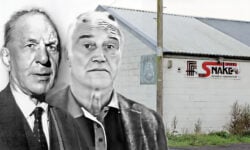There was once a professional wrestler who spent nearly two decades hiding a disability so profound that even his toughest opponents refused to believe it. George Weingeroff, who won gold at the 1976 Toronto Paralympics and battled legends like Macho Man Randy Savage, Sting, and Lou Thesz, was legally blind. His secret was so unbelievable that wrestlers would stop mid-match to argue with referees, some dropping to their knees and shouting to the crowd that it had to be a lie. But a lie it wasn’t. This is the extraordinary story of how one man’s greatest limitation became his ultimate strength in the unforgiving world of professional wrestling.
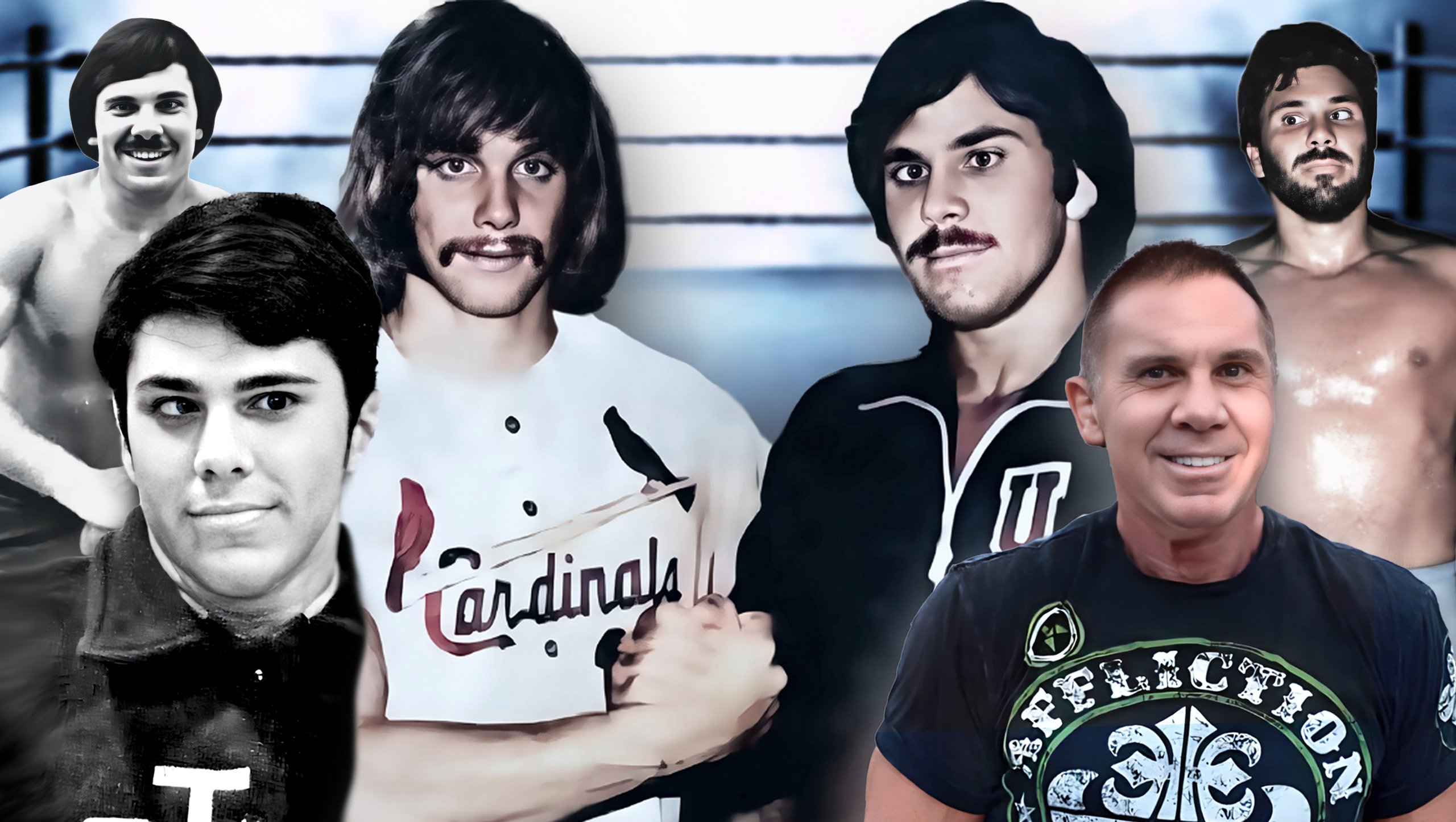
Quick Tip for Facebook Readers
Many of our readers connect with our content through our Facebook page. However, Meta's built-in browser (which opens by default on mobile) occasionally freezes mid-article- a known issue unrelated to our site. To enjoy uninterrupted reading: Tap the three dots in the top right corner → Select 'Open in external browser.' This will resolve the glitch. Thanks for your support. We want your wrestling stories to stay as smooth as a top-rope hurricanrana!
Wrestling Royalty: How George Weingeroff Inherited His Father’s Legacy
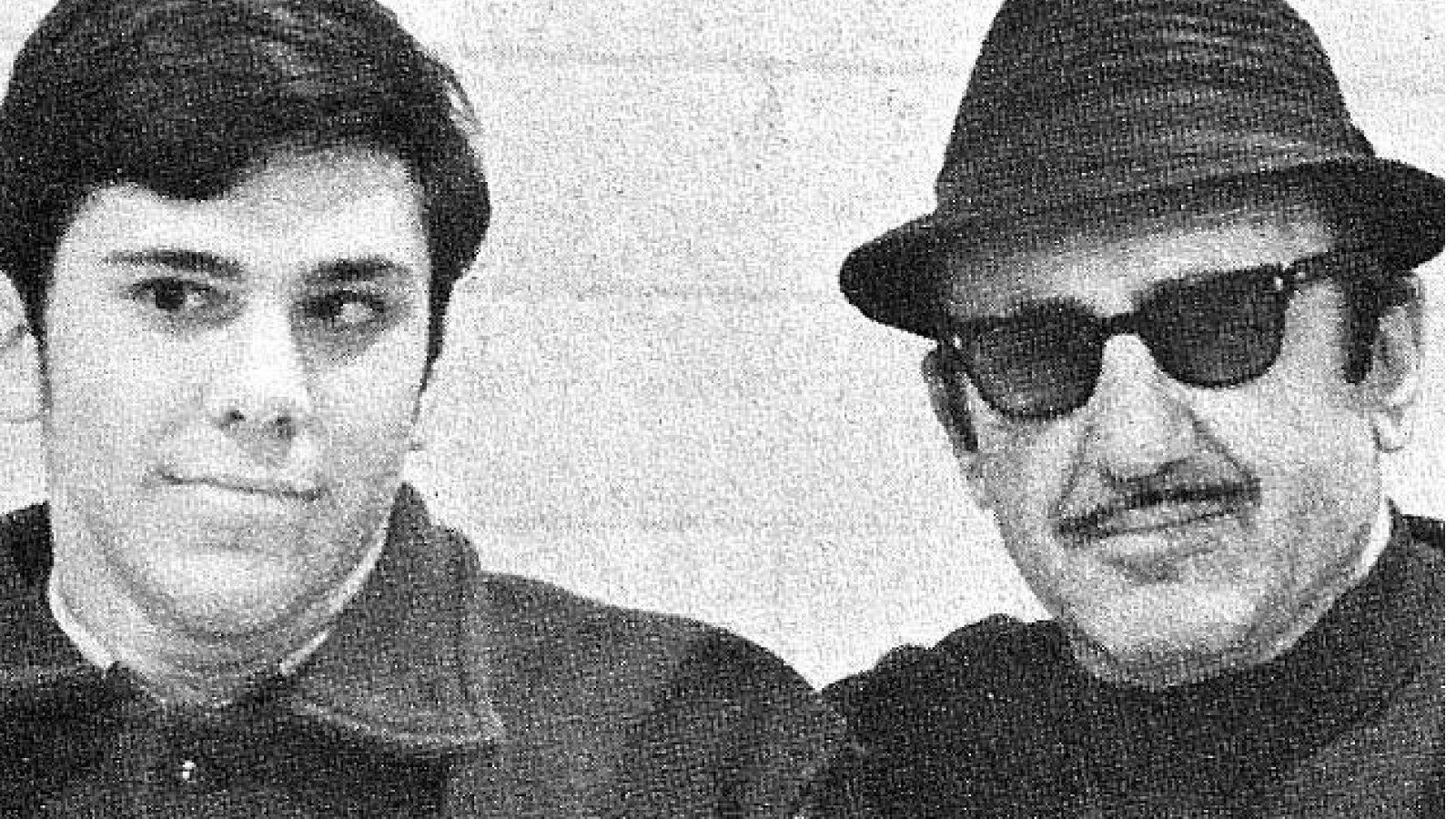
Born in November 1952 in Augusta, Georgia, the underdog wrestling story of George Weingeroff started before he was even delivered.
George’s father was "Gentleman" Saul Weingeroff, one of the most successful wrestling managers of the 1960s. Saul worked with a list of wrestling greats but was most famous for managing The Von Brauners, the fearsome German team that wreaked havoc throughout the National Wrestling Alliance.
George’s introduction to wrestling came when he attended Eddie Graham’s All-American Youth Camp in Daytona, Florida. "Coach" John Heath, who spent some time as a wrestler, announcer, and promoter in Graham’s Florida territory, came in daily and taught the kids wrestling.
It was Saul who first suggested that George consider attending the Tennessee School for the Blind in Nashville, Tennessee. Reluctant at first, George eventually met up with TSB wrestling coach Ralph Brewer and decided to enroll.
George vividly remembered the excitement of his first match for TSB. He estimated that around 1,500 people attended this significant event, including his father, Saul, the legendary professional wrestler Lou Thesz, various television and print media representatives, as well as Tennessee wrestling icons Len Rossi and Tojo Yamamoto.
As a father, Saul delighted in his son’s wrestling prowess.
"That George is something," bragged Saul in a 1971 news article. "There was a time when he was little that the kids in the neighborhood used to call him ‘Saul’s little boy.’ Now he’s so good, they refer to me as ‘George’s old man.’"
"My dad would miss work to come to dual meets. He was so proud that his son was doing good in wrestling," George reminisced in an interview with Give Me My Pro Wrestling.
Saul had reason to be proud. George scored an impressive 57-9 record for TSB, a school that produced fourteen individual state champions in the 1960s.
Paralympic Gold and College Dominance: George Weingeroff’s Amateur Wrestling Triumphs

From 1972 to 1975, George Weingeroff continued to build his wrestling legacy at the University of Tennessee at Chattanooga.
Despite being legally blind, he maintained a strong competitive record and made a name for himself by placing fourth in the 190-pound weight division at the 1975 Southeastern Intercollegiate Wrestling Association (SEIWA) tournament, an impressive achievement in a highly competitive field.
His success at UTC further cemented his reputation as a determined and highly skilled athlete. After graduating, George turned his focus to teaching and coaching, taking a position at the Indiana School for the Blind. But his competitive spirit hadn’t faded.
In 1976, George reached a historic milestone by winning a gold medal in wrestling at the Summer Paralympics, then referred to as the Olympiad for the Physically Disabled.
While wrestling was considered an unofficial sport at those games, it served as a powerful exhibition match between the United States and Canada to advocate for broader inclusion of disabled athletes in international wrestling.
Though many would see the Paralympic gold as the pinnacle of an already remarkable career, George modestly downplays the achievement. "It looks good on paper," he once remarked in an interview.
Still, for those who followed his journey, that victory was a representation of resilience, skill, and the breaking of barriers in the world of sports.
The $10 Debut: George Weingeroff’s Professional Wrestling Journey Begins
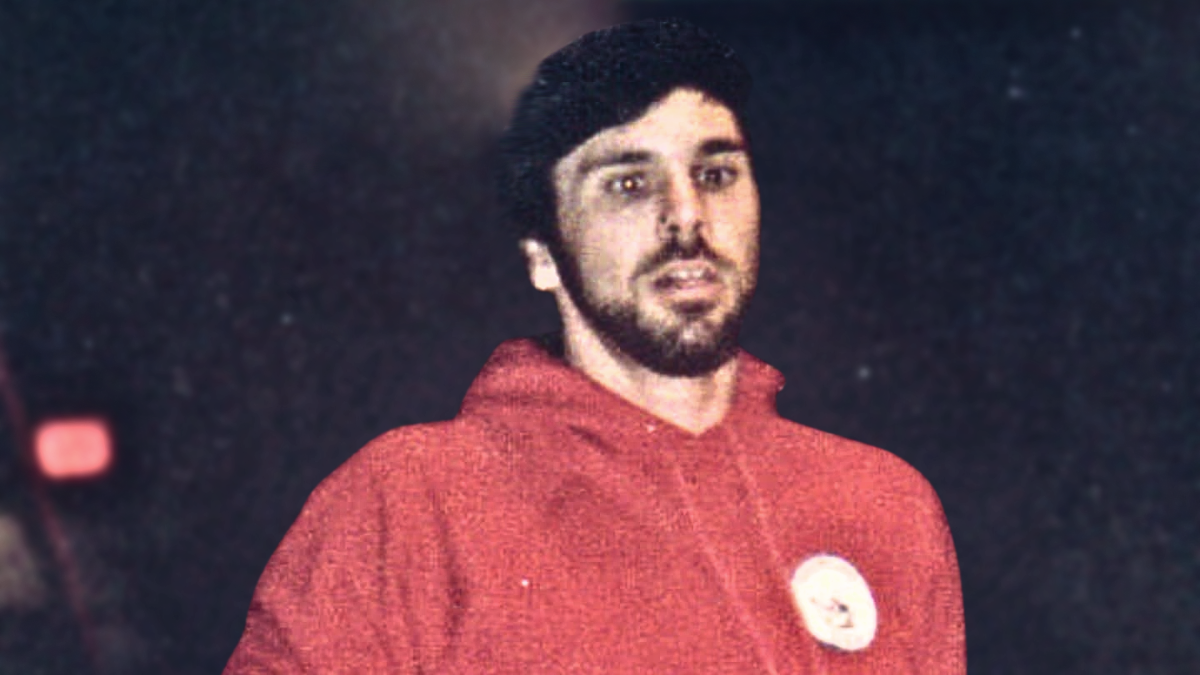
George Weingeroff’s first officially recorded professional wrestling match took place in 1975 in Tampa, Florida, where he faced off against Doug Sommers.
That same night, NWA World Heavyweight Champion Jack Brisco headlined the card with a successful title defense against Cyclone Negro, a sign of the high-caliber company George was already keeping.
But according to George, his actual in-ring debut came much earlier. At just fifteen years old, in a match against Paul Morton, father of Ricky Morton from The Rock and Roll Express.
"Saul had just smartened me up," George recalled, referring to the moment he learned about the scripted nature of pro wrestling. Nervous and inexperienced, he accidentally put his wrestling boots on the wrong feet and competed that way the entire match. He earned just $10 for his performance, and the impromptu bout nearly cost him a full year of amateur wrestling eligibility.
After a few years of what local newspapers referred to as "wrestling exhibitions with professionals," George began appearing regularly for Nick Gulas’ NWA Mid-American territory.
There, he shared the ring with a range of seasoned and up-and-coming talent, including Tojo Yamamoto, Danny Little Bear, Norvell Austin, and a young Junkyard Dog. One of the most notable relationships from this era was with Pezavan "Pez" Whatley, a fellow Chattanooga wrestler whose career consistently paralleled George’s.
From high school matches at Notre Dame, to being teammates at UTC (where Pez became the school’s first Black wrestler), to working in the same professional wrestling territories, Whatley remained a constant figure throughout George Weingeroff’s journey in and out of the ring.
ICW and the Poffos: George Weingeroff’s Rise in Outlaw Wrestling Territory

One of the more notable aspects of George Weingeroff’s career would be his relationship with the Poffo family and his time in International Championship Wrestling (ICW).
Angelo Poffo’s wrestling career started in the late 1940s. He held titles in the U.S. and Canada and was known for his record-breaking fitness. At one point, Saul Weingeroff even managed Poffo.
In 1978, recognizing that the real money was in promoting matches, even in a crowded Kentucky-Tennessee market, Angelo, alongside his sons Randy and Lanny Poffo, created ICW, based in Lexington, Kentucky.
ICW was considered an "outlaw" promotion because it was operating in opposition to other promotions that had the support of the established NWA.
After graduating from UTC, George Weingeroff spent his summer in Toledo, Ohio, wrestling for The Sheik. While in Toledo, he befriended another aspiring wrestler named Randy.
"I had a great summer with Randy. I was blessed", Weingeroff recalled of his time coming up in the business with future WWE Hall of Famer, “Macho Man” Randy Savage. George felt his most memorable match was his one-hour time-limit draw with Randy in the Cobo Hall in Detroit.
"He wouldn’t take off matches," Weingeroff noted about Savage. "Whether it was 50 people in the audience or 15,000, he was going to work just as hard."
By 1979, George was working for ICW, thanks to his relationship with Randy. George says this is where he began to come into his own as a professional.
Unlike some opposition groups, ICW maintained a solid roster throughout the years, including Ronnie Garvin, Bob Roop, Bob Orton Jr., Ox Baker, Pez Whatley, and Crusher Bloomfield, who would later become known as the One Man Gang and Akeem the African Dream.
However, the featured wrestlers were Angelo wrestling under a mask as "The Miser" and Randy and his younger brother, "Leaping" Lanny Poffo, who traded the ICW Heavyweight Championship back and forth for most of the promotion’s existence.
Tag Team Partners and Best Friends: The Bond Between George Weingeroff and Lanny Poffo

George Weingeroff and Lanny Poffo became tag partners and good friends, and went on to tag in Mid-South Wrestling after ICW folded.
George described Lanny’s relationship with his family as one with a power imbalance.
"He was a nice guy," Weingeroff said about Lanny. "Angelo Poffo was a prick and vindictive. [Angelo and Randy] dominated his life."
In a 2021 interview with WSI, Lanny described himself as the "Fredo” of the family, referring to the character in The Godfather, who was considered the least powerful person in the family.
Lanny said he was ready to break out on his own in the Los Angeles territory before getting the call to Lexington to run the new family business. He said being unable to work in L.A. was one of the heartbreaks of his life.
While the Poffos were great teachers and instrumental to his career, George knew he had to leave because Angelo was too controlling and especially stingy with payoffs.
At one point, George and Randy’s relationship deteriorated after George recommended Lanny and other ICW wrestlers to different territories.
George describes the situation with Randy:
"Randy was pissed. He said, ‘You stole my talent!’ I wasn’t trying to steal anybody. I was trying to help those guys because they were starving."
Although George and Randy reconciled in the mid-’90s, their friendship never recovered.
ICW folded when Angelo made a deal with Jerry Jarrett to sell the company and have the Poffos invade the Jarrett’s Continental Wrestling Association.
George stayed in touch with Lanny up until his death in 2023.
"We spoke a week before he died. He was going to New York City. He had an agent; he was doing a signing. He had a heart attack in his sleep."
Bill Watts’ Enforcer: George Weingeroff’s Time in Mid-South Wrestling
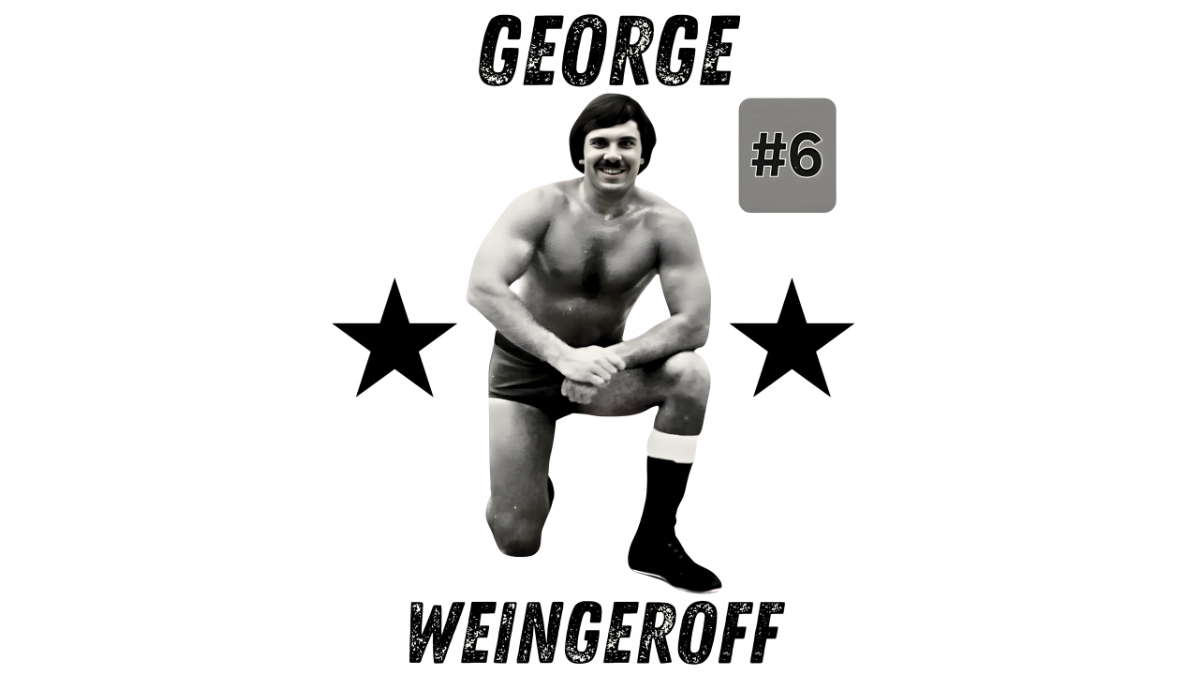
George Weingeroff brought his legit wrestling skills to Mid-South Wrestling, where promoter and booker Bill Watts quickly recognized his talent as a true shooter.
Watts used George as a quiet enforcer of sorts, often feeding him eager hopefuls who came to his office wanting to break into the business.
"Guys would come to his office and want to be wrestlers," George recalled. "[Watts] would get in the ring and referee, and I would stretch the guy."
The unsuspecting trainees, often underestimating the legally blind wrestler, quickly learned the hard way just how serious the sport—and George—really were.
Beyond Mid-South, George also found success in World Class Championship Wrestling, where big crowds and strong payoffs marked some of the highlights of his career. He shared the locker room with major stars of the era, including members of the legendary Von Erich family.
George recalled a wild moment when a swarm of fans overwhelmed Kerry Von Erich after a show: "There were at least 300 girls on him, and they were tearing his clothes off. You’d think that’s cool, but it’s not; it’s scary. It’s good to be over, but not like that."
For George, these larger-than-life moments were just part of the ride through wrestling’s golden years.
Championship Wrestling from Florida: George Weingeroff’s Final Territory Years

After his time in Mid-South and World Class, George Weingeroff took his talents to Eddie Graham’s Championship Wrestling from Florida (CWF), a territory once known for its strong storytelling and technical in-ring style.
Unfortunately, George joined near the tail end of the promotion’s existence, when it was struggling both creatively and financially. In an interview, George offered a blunt assessment of the situation: "When Dusty [Rhodes] left, it went to ****. It wasn’t very long, [Eddie Graham] shot himself. There was talent, but they couldn’t draw anywhere."
His comments reflect the internal turmoil that plagued the once-mighty Florida territory during its final chapter. While the roster was still stacked with capable performers, fan interest had dwindled, and the shows failed to generate the excitement or attendance they once enjoyed.
Despite the disarray, George made the most of his time in Florida, sharing the ring with a mix of veterans and emerging talent. His skill, professionalism, and ability to adapt to any style helped him maintain a steady presence even as the territory crumbled around him.
For George, Florida was less about chasing stardom and more about continuing to work in the business he loved, even amid unstable booking and uncertain paydays.
Following his time in CWF, George had a brief stint in Bill Watts’ Universal Wrestling Federation (UWF), a rebranded evolution of Mid-South Wrestling that aimed to become a national promotion.
Though his time there was short, it provided George with the opportunity to work with some of wrestling’s future megastars.
In one memorable match, George faced off against a young Sting, who was still early in his career and wrestling with raw energy and athleticism.
Reflecting on the experience, George spoke highly of his opponent: "He was a pleasure to work with!"
That short match symbolized a passing of the torch between generations – George, the rugged, seasoned grappler, and Sting, the up-and-coming superstar who would help define wrestling in the late 1980s and beyond. Even in fleeting appearances, George Weingeroff left an impression on those who shared the ring with him.
All-Japan Pro Wrestling: George Weingeroff’s International Wrestling Success

George Weingeroff traveled to Japan to compete for All-Japan Pro Wrestling, where his ability to take care of himself in the ring came in handy.
"It served me well in Japan with the young guys. They try to kick the **** out of you."
George tells a story about when he had to put Toshiaki Kawada in a hold to defend himself during a match.
On another occasion, in a match against Genichiro Tenryu, George chose to wrestle a lighter, more American style. George later found out that Tenryu was unhappy with the match. The next time they wrestled, George brought the heat.
"A few nights later, when I wrestled him, I just beat the crap out of [Tenryu], right? He sneaks around the building and comes into the dressing room, and I say, ‘Oh ****’ He put out his hand and said, ‘Thank you, that’s what I wanted. I thought he was going to beat my *** right there," Weingeroff recalled.
Weingeroff returned to Japan in 1993 as part of a Pancrase shoot fighting promotion at the urging of Ken Shamrock, the "World’s Most Dangerous Man." At the time, Weingeroff was 41 years old.
"We went a week or so early and practiced in the dojo. I got the **** kicked out of me by Shamrock, and he would want to go out and run 10 miles every day," Weingeroff reminisced on an episode of Live and In Color with Wolfie D.
George also shared the ring with Puroresu legends like Jumbo Tsuruta, Tiger Jeet Singh, The Great Kabuki, John Tenta, Tiger Mask (Misawa), and Giant Baba.
The Sheik Transformation: George Weingeroff’s Character Reinvention in WCW
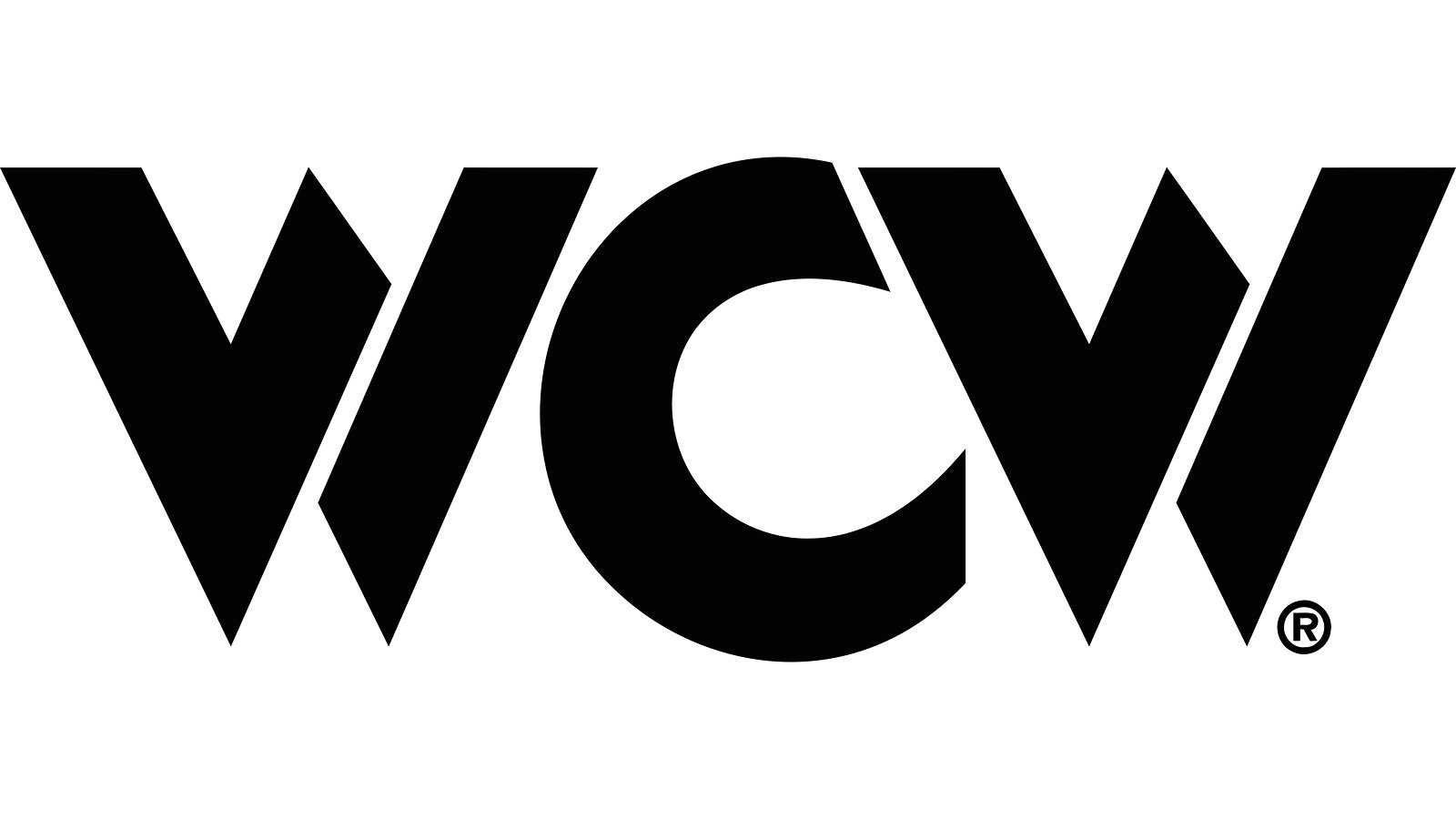
In the later years of his wrestling career, George Weingeroff found a new spark in an unexpected direction by reinventing himself with a Sheik gimmick on WCW television and the independent circuit.
Known throughout his career as a technical wrestler with legitimate amateur credentials and a clean-cut image, George recognized that times had changed and so had the wrestling business. Audiences were gravitating more toward colorful characters and larger-than-life personas, especially during the late ‘80s and early ‘90s boom in mainstream wrestling.
In response, George transformed his in-ring identity, adopting a heelish Middle Eastern character that drew heat from the crowd and gave him new creative opportunities.
"I was never going to make any money as a goody-two-shoes white boy George Weingeroff," he said in an interview, explaining why he took the leap into a more controversial persona.
The Sheik gimmick gave George the chance to play with audience expectations, offering a complete departure from the grounded, no-nonsense wrestling style that had defined much of his career.
While the character was relatively short-lived, it helped him stay relevant during a time when professional wrestling was becoming more theatrical, character-driven, and entertainment-focused.
George worked several matches under this persona in WCW and various independent promotions, often appearing on TV tapings and regional shows where the gimmick could provoke strong crowd reactions.
Though he didn’t spend years in the spotlight with this character, the experience allowed him to stretch his creative muscles and enjoy a fresh chapter before stepping away from full-time competition.
The Great Deception: Why Wrestling Stars Refused to Believe George Weingeroff Was Blind
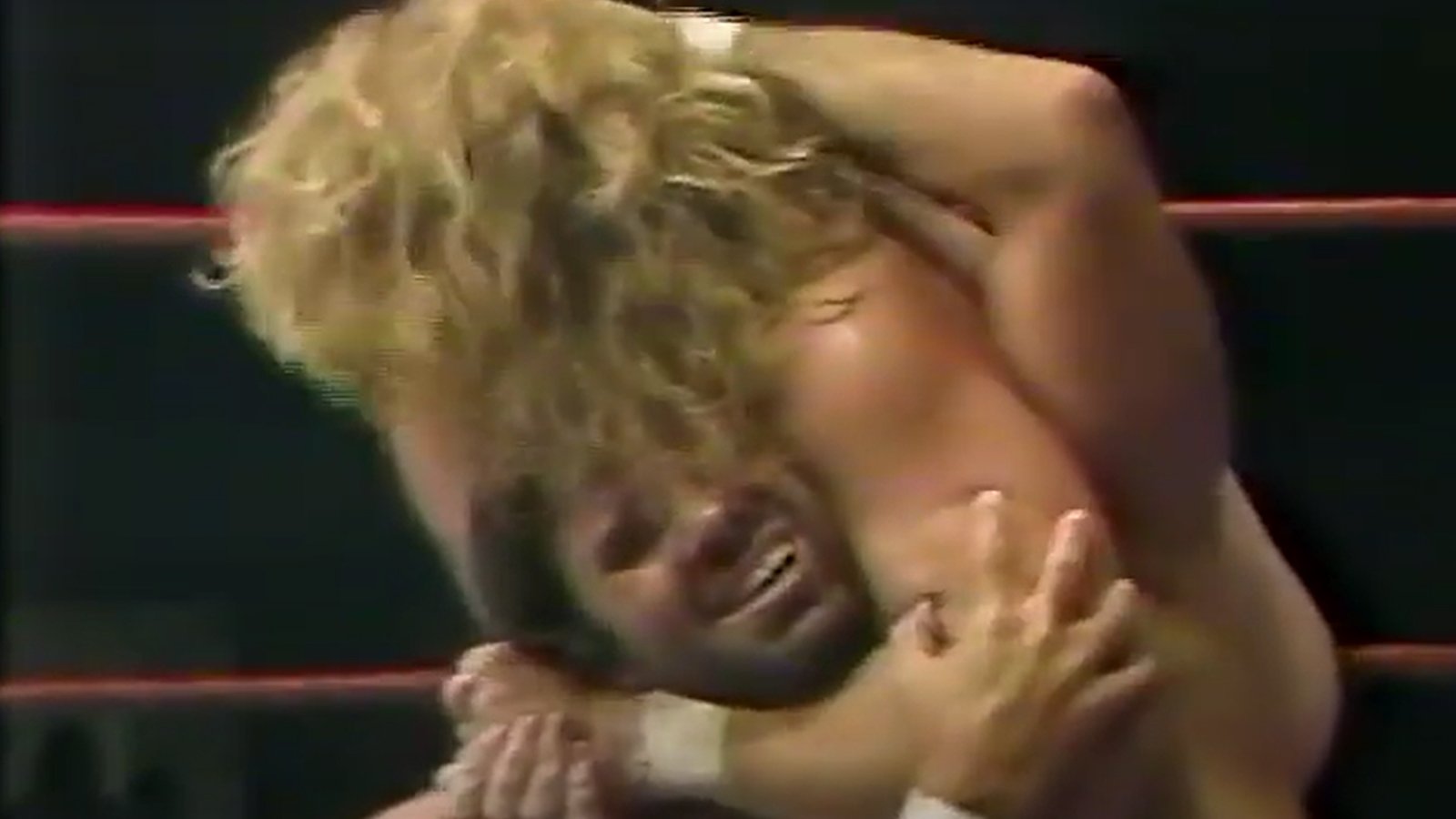
Despite living and wrestling with legal blindness his entire life, some opponents simply refused to believe it, especially after stepping into the ring with him.
One memorable moment came on a fall night in 1984 when George was facing "Wild" Bill Irwin. At one point in the match, Irwin had George tied up in the ropes and in full control until George suddenly reversed the situation and slapped him hard across the face.
Stunned, Irwin dropped to his knees and turned to the audience, shouting in disbelief: "That guy ain’t blind! He ain’t blind! I’m telling you that!"
His outburst wasn’t just part of the act. It was a genuine reaction, one shared by many wrestlers over the years who couldn’t reconcile George’s technical skill, sharp timing, and ring awareness with the fact that he was legally blind.
"Wild" Bill Irwin wasn’t alone in his confusion. George had been doubted by plenty of skeptics throughout his career. His smooth in-ring performance, ability to work tight matches, and flawless timing often made it easy for both fans and fellow wrestlers to forget—or outright deny—his condition.
But the truth remained: George Weingeroff was legally blind, and had been since birth.
His condition wasn’t a work, a gimmick, or exaggerated for sympathy. It was real. And yet, time and time again, his ability to adapt and thrive in the ring left people questioning what they thought they knew.
Even George himself has always been modest about his condition and reluctant to make it the centerpiece of his identity.
"The legally blind stuff is irrelevant," he said plainly. "I can see pretty well. Things were just blurry for me."
To George, his vision challenges weren’t an obstacle or a storyline. They were a fact of life. His goal was never to be seen as an inspiration or a miracle worker, but as a capable wrestler who could hang with anyone, no matter what limitations others thought he had.
How Legally Blind Pro Wrestler George Weingeroff Rewrote the Rules of Physical Limitation
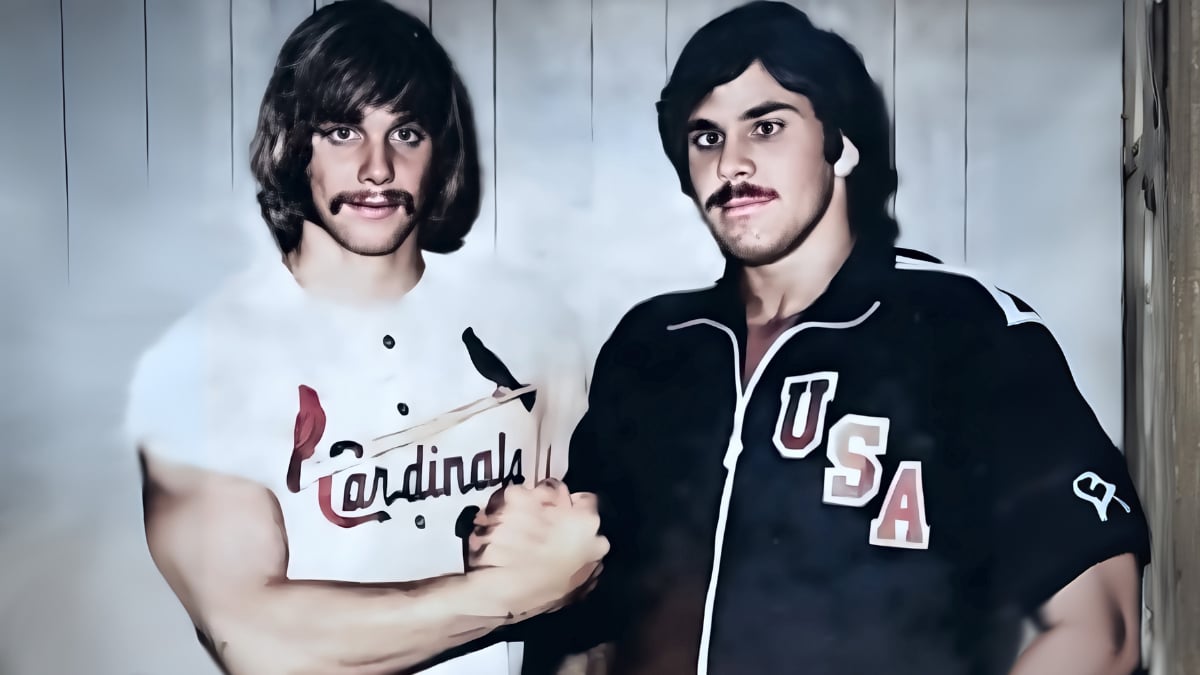
George Weingeroff eventually underwent surgery that restored most of his vision. But by then, his legacy as a wrestler who defied the odds had long been cemented.
For much of his life and career, George competed with a significant visual impairment, something that would have sidelined or discouraged most. Yet he never allowed it to define him; instead, he built a reputation as a gritty, technically sound competitor who could hold his own with anyone in the ring who refused to be limited by physical challenges.
The International Agency for the Prevention of Blindness reports that 43 million people globally live with blindness, while another 295 million live with moderate-to-severe visual impairment. In that context, George’s story stands out not only for his individual achievements but as an example of what’s possible.
Few have reached the level of success George did in both amateur and professional wrestling, blending raw athleticism, sharp ring IQ, and an ability to adapt in a sport that’s as unforgiving as it is physically demanding. His triumphs serve as quiet inspiration, especially for those who face similar challenges but still dream of competing on the world’s stages.
While George has always been humble about his journey, what can’t be overstated is his place in wrestling history. George Weingeroff was a dominant amateur standout, a respected journeyman across multiple territories, and a legit tough guy whose in-ring credibility earned him the respect of peers and promoters alike.
George Weingeroff’s story is about toughness, persistence, and the unwavering belief that talent will always rise, regardless of the obstacles.
These stories may also interest you:
- ICW Wrestling Territory: The Poffo Family’s Outlaw Promotion
- Vader and the Time His Eye Popped Out During a Match
- 6 Times Professional Wrestlers Were Blinded
Can’t get enough pro wrestling history in your life? Sign up to unlock ten pro wrestling stories curated uniquely for YOU, plus subscriber-exclusive content. A special gift from us awaits after signing up!
Want More? Choose another story!
Be sure to follow us on Facebook, X/Twitter, Instagram, Threads, YouTube, TikTok, and Flipboard!
Pro Wrestling Stories is committed to accurate, unbiased wrestling content rigorously fact-checked and verified by our team of researchers and editors. Any inaccuracies are quickly corrected, with updates timestamped in the article's byline header.
Got a correction, tip, or story idea for Pro Wrestling Stories? Contact us! Learn about our editorial standards here. Ever wanted to learn more about the people behind Pro Wrestling Stories? Meet our team of authors!
ProWrestlingStories.com participates in affiliate marketing programs. This post may contain affiliate links, meaning we may earn commissions at no extra cost to our readers. This supports our mission to deliver free content for you to enjoy!

"Evan Ginzburg’s stories are a love letter to wrestling, filled with heart, humor, and history. A must-read for any true fan." — Keith Elliot Greenberg
Wrestling Rings, Blackboards, and Movie Sets is the latest book from Pro Wrestling Stories Senior Editor Evan Ginzburg. 100 unforgettable stories—from sharing a flight on 9/11 with a WWE Hall of Famer to untold moments in wrestling history. A page-turner for fans of the ring and beyond. Grab your copy today! For signed editions, click here.










